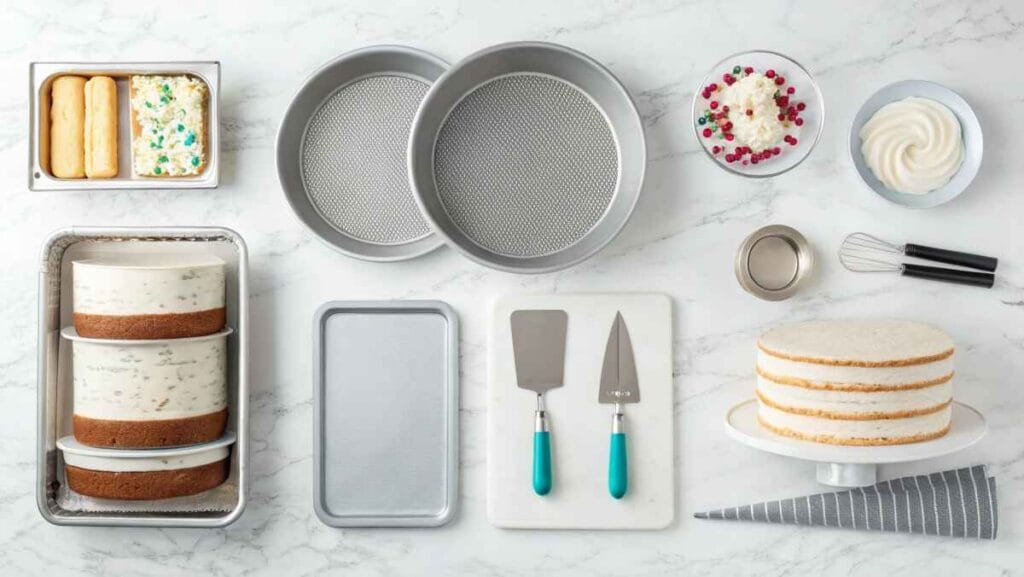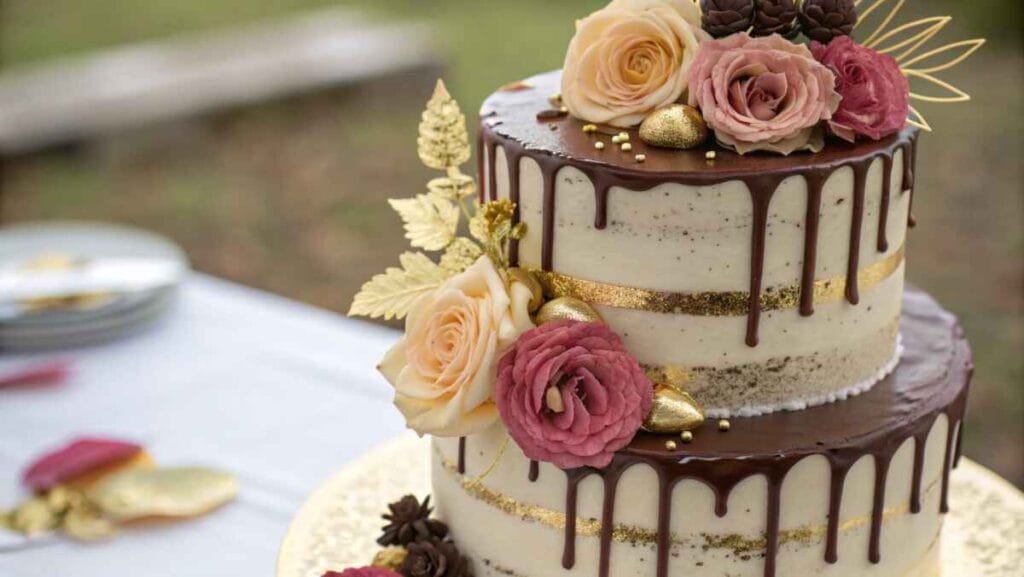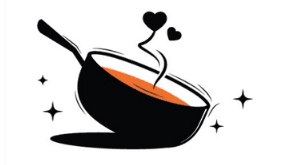Layered cakes are not just desserts; they are edible masterpieces that captivate with their beauty and tantalize with their taste. In this guide, we delve deep into the world of decadent layered cakes, uncovering their history, components, and irresistible allure.
Table of Contents
Introduction to Layered Cakes
The Allure of a Decadent Layered Cake
Layered cakes are the ultimate showstoppers at any event. Their towering presence, intricate designs, and delicious layers make them the centerpiece of celebrations, from weddings to birthdays. These cakes offer more than just taste; they tell a story of creativity, skill, and indulgence.
- Visual Appeal: Layered cakes often feature vivid colors, artistic designs, and decadent embellishments like edible flowers or metallic accents.
- Taste Complexity: Multiple layers mean the chance to explore complementary flavors, from rich chocolate to tart fruits and creamy frostings.
- Versatility: Whether it’s a classic Black Forest or a modern drip cake, layered cakes adapt to every occasion and personal style.
What Makes a Cake Truly Decadent?
A truly decadent layered cake stands out through its flavor, texture, and presentation.
- Rich Flavors: The use of premium ingredients like Belgian chocolate, Madagascar vanilla, or organic fruits amplifies taste.
- Perfect Texture: A decadent cake balances fluffiness with moistness, ensuring every bite melts in your mouth.
- Artful Presentation: Layers need to be even, with frosting and decorations that create a feast for the eyes.
History of Layered Cakes
Layered cakes trace their origins to 19th-century Europe, where baking innovations allowed for more elaborate desserts.
- Evolution of Layers: Early cakes were simple, but advances in baking techniques introduced multiple layers with fillings.
- Cultural Adaptations: Over time, every culture added its flair, from France’s Mille-Feuille to Germany’s Black Forest.
- Modern Popularity: Today, layered cakes are a global sensation, evolving to include vegan options, fusion flavors, and innovative designs.
Essential Components of a Layered Cake
At its core, a layered cake comprises four essential components:
- Cake Layers: The foundation, ranging from sponge to dense chocolate cake.
- Fillings: Add flavor variety, such as fruit compotes, ganache, or buttercream.
- Frosting: Smooths and holds the layers together, often doubling as a canvas for decoration.
- Decorations: From piped flowers to edible glitter, these details transform the cake into art.
Tools and Equipment for Perfect Layered Cakes

Achieving a flawless layered cake requires the right tools and equipment.
Must-Have Baking Tools and Accessories
- Cake Pans: Uniform pans for even baking.
- Offset Spatulas: For spreading frosting smoothly.
- Turntable: Essential for clean, 360-degree decoration.
- Leveler or Serrated Knife: To ensure even cake layers.
- Piping Bags and Tips: For intricate decorations.
- Bench Scraper: To perfect sharp edges on frosted cakes.
Popular Variations in Layered Cakes
Layered cakes come in an array of flavors and designs, each with its charm.
Traditional Favorites
- Black Forest Cake: Chocolate layers with cherry filling and whipped cream.
- Opera Cake: A French masterpiece with almond sponge, coffee buttercream, and ganache.
- Red Velvet Cake: Known for its vivid color and tangy cream cheese frosting.
Choosing the Right Flavors for Your Cake

Pairing flavors can make or break a layered cake.
- Classic Combos: Chocolate and hazelnut, lemon and blueberry, or vanilla and strawberry.
- Bold Choices: Matcha and white chocolate, dark chocolate and chili, or lavender and honey.
- Texture Variations: Adding crunch (nuts, praline) or smooth layers (mousse) enhances the sensory experience.
The Role of Visual Appeal in Layered Cakes
Layered cakes aren’t just desserts; they are edible art.
Captivating Designs and Decorations
- Trending Styles: Drip cakes, geode designs, and metallic finishes dominate modern aesthetics.
- Classic Looks: Smooth buttercream, piped borders, and simple floral accents.
- Personalization: Custom themes, like a princess birthday cake or minimalist wedding cake.
Common Mistakes When Baking Layered Cakes
Even seasoned bakers face challenges when creating layered cakes. Avoid these pitfalls:
- Uneven Layers: Invest in tools like levelers for precise slicing.
- Dry Cake: Overbaking or not using simple syrup to moisten layers can lead to dryness.
- Collapsing Layers: Ensure proper stacking with dowels or supports for tall cakes.
Why Layered Cakes Steal the Spotlight at Any Event
Layered cakes are the stars of any gathering due to their impactful presence.
- Size and Scale: A towering cake naturally draws attention.
- Style Diversity: From rustic naked cakes to elaborate fondant designs, the options are endless.
- Flavor Impact: Each layer offers a new taste journey, keeping guests excited for the next slice.
Crafting the Perfect Decadent Layered Cake
Creating a showstopping layered cake requires precision, patience, and creativity. From gathering premium ingredients to mastering frosting techniques, this section dives into every detail to ensure your cake is nothing short of spectacular.
Preparing to Bake a Layered Cake
The foundation of a perfect cake lies in its preparation. Before diving into the process, it’s essential to have everything in place.
Ingredients for a Showstopping Cake
Using high-quality ingredients can elevate your cake from ordinary to extraordinary.
- Flour: Opt for cake flour for a tender crumb or all-purpose flour for denser cakes.
- Sugar: Fine granulated sugar blends seamlessly, while brown sugar adds a caramelized flavor.
- Eggs: Room-temperature eggs ensure fluffy and consistent batter.
- Butter: Unsalted butter allows better control over flavor.
- Special Additions: Incorporate premium cocoa powder, Madagascar vanilla, or fresh fruits for bold flavors.
How to Achieve Perfect Cake Layers
Consistency is key when it comes to layered cakes. Follow these steps to achieve evenly baked layers:
- Mixing: Overmixing can lead to dense cakes, so stop as soon as ingredients combine.
- Portioning: Use a kitchen scale to evenly divide batter between pans.
- Baking: Bake layers on the same rack to ensure even heat distribution.
- Cooling: Let cakes cool completely before leveling and stacking to avoid slipping layers.
Secrets to Fluffy and Moist Cake Layers
Creating a cake that is both light and moist requires attention to detail:
- Room-Temperature Ingredients: Butter, eggs, and milk mix more efficiently when not cold.
- Alternate Mixing: Add wet and dry ingredients alternately to avoid overloading the batter.
- Don’t Overbake: Check for doneness with a toothpick just before the suggested bake time.
- Use Simple Syrup: Brush layers with a mixture of sugar and water for added moisture.
Creating Sumptuous Fillings
Fillings add layers of flavor and texture, making them integral to the overall experience.
Popular Filling Options
- Buttercream: A versatile choice, from classic vanilla to rich chocolate.
- Ganache: A glossy mixture of cream and chocolate for decadent layers.
- Fruit Compote: Adds a tart, fruity element that balances sweetness.
- Custard or Pastry Cream: Ideal for creamy, luscious layers.
Frosting Techniques for Layered Cakes
The frosting is not only the glue that holds the cake together but also the visual centerpiece.
- Smooth Finish: Use a bench scraper and offset spatula for a clean, polished look.
- Textured Frosting: Create waves or ridges for a rustic or modern effect.
- Piping Details: Floral designs, borders, or patterns enhance aesthetic appeal.
Assembling the Cake Like a Pro
Layering a cake requires patience and precision:
- Leveling: Trim domed tops for even layers.
- Crumb-Coating: Apply a thin layer of frosting to seal crumbs before the final coat.
- Chilling: Refrigerate between steps to set layers and frosting.
- Final Layer: Smooth or texture the final coat before adding decorations.
If you’re looking for additional dessert pairings to complement your cake, these Vanilla Hot Chocolate Molten Cookies are a perfect match for a rich, chocolatey cake filling.
Designing and Decorating the Cake

A layered cake’s appearance can elevate it to centerpiece status.
Using Edible Decorations
- Flowers: Choose edible blooms like roses, pansies, or marigolds.
- Drip Effects: Melted chocolate or caramel drizzled from the edges adds drama.
- Metallics: Edible gold or silver leaf creates a luxurious feel.
Creative Themes
- Rustic Cakes: Naked cakes with minimal frosting and fresh fruit.
- Elegant Designs: Smooth fondant with intricate piping or lace patterns.
- Whimsical Themes: Rainbow layers or character-inspired decorations.
Making Layered Cakes for Special Occasions
Customization is key to tailoring your cake to specific events:
- Weddings: Elegant tiers with floral or lace motifs.
- Birthdays: Personalized themes like superheroes or unicorns.
- Holidays: Festive cakes with seasonal colors and flavors like peppermint or spiced apple.
For a complete dessert table that dazzles guests, pair your layered cake with treats like Vanilla Hot Chocolate Molten Cookies, offering a variety of textures and flavors.
Storing and Transporting Layered Cakes Safely
Preserving the freshness and structure of your layered cake is essential.
Storage Tips
- Short-Term: Refrigerate for up to 3 days in an airtight container.
- Long-Term: Freeze individual layers wrapped in cling film before assembly.
Transporting the Cake
- Sturdy Base: Use a thick cake board or platform.
- Protective Cover: Place in a cake box to prevent damage during transit.
- Temperature Control: Avoid exposure to heat or humidity, which can melt frosting or compromise structure.
Elevating Your Layered Cake Experience
Creating a layered cake is only the beginning. To truly stand out, you can refine techniques, experiment with flavors, and incorporate advanced elements that turn a simple cake into a masterpiece. In this final part, we’ll explore unique flavors, advanced techniques, and professional tips to elevate your baking skills.
Advanced Techniques for Decadent Cakes
Mastering advanced techniques takes your cakes to a professional level.
Infusing Unique Flavors
Go beyond the basics by incorporating flavors that surprise and delight:
- Liqueurs: Add a splash of Grand Marnier, Amaretto, or Kahlúa to the batter or frosting for a sophisticated edge.
- Exotic Spices: Think cardamom, star anise, or saffron to add depth and aroma.
- Seasonal Ingredients: Use ingredients like pumpkin spice, fresh figs, or pomegranate seeds to reflect the time of year.
Creative Layer Combinations
Play with textures and flavors for a multi-dimensional experience:
- Crunchy Layers: Incorporate praline, caramelized nuts, or cookie crumbles.
- Creamy Layers: Alternate mousse or custard layers with denser cake for contrast.
- Fruit and Chocolate: Pair chocolate layers with tart raspberry or citrus fillings for balance.
Vegan and Gluten-Free Layered Cake Ideas
Accommodating dietary needs doesn’t mean sacrificing decadence.
- Vegan Alternatives: Use plant-based butter, aquafaba for eggs, and almond milk for moist and flavorful vegan cakes.
- Gluten-Free Options: Experiment with almond flour, coconut flour, or gluten-free all-purpose blends.
- Unique Additions: Vegan ganache made with coconut cream or gluten-free chocolate layers with fresh fruit.
Behind-the-Scenes of Professional Layered Cake Making
Insights from expert bakers reveal the secrets behind flawless cakes.
Precision is Everything
- Measuring: Use a kitchen scale for consistent results.
- Temperature Control: Ensure all ingredients, especially butter and eggs, are at room temperature.
Pro Tools of the Trade
- Acetate Sheets: Perfect for building mousse-based or mirror-glazed cakes.
- Airbrush Kits: Add depth to decorations with shading and gradient effects.
- Dowel Supports: Essential for tiered cakes to maintain structure.
How to Host a Layered Cake Tasting Party
Celebrate your creations by sharing them with others!
- Menu Planning: Offer mini slices of different flavors, from classic vanilla to exotic matcha.
- Pairings: Complement cakes with drinks like coffee, tea, or wine.
- Decor: Set up a visually stunning display with themed tableware and garnishes.
Photography Tips for Decadent Cakes
Capturing your layered cakes in all their glory requires the right techniques:
- Lighting: Use natural light for a soft, appealing look.
- Angles: Highlight the layers by shooting from the side or at an angle.
- Props: Incorporate cake stands, fresh flowers, or utensils for context.
Turning Your Passion for Cakes into a Business
If you’ve mastered the art of layered cakes, why not turn it into a venture?
- Building a Portfolio: Share high-quality images on social media platforms like Instagram and Pinterest.
- Marketing: Offer custom cakes for local events, catering to weddings, birthdays, and corporate gatherings.
- Continuous Learning: Attend workshops or online classes to stay updated with trends and techniques.
Recipes for Iconic Decadent Layered Cakes
Here are step-by-step instructions for a few beloved layered cakes:
Red Velvet Cake
- Cake Layers: Use a blend of cocoa powder and red food coloring for a striking hue.
- Frosting: Smooth cream cheese frosting with a hint of vanilla.
- Assembly: Alternate layers with frosting, finishing with a smooth coat and piped details.
Mille-Feuille
- Pastry Layers: Crisp puff pastry baked to golden perfection.
- Filling: Light vanilla pastry cream or whipped cream.
- Top Layer: Dust with powdered sugar or drizzle with fondant glaze.
Celebrating Layered Cakes Around the World
Explore the global traditions of layered cakes:
- France: The Opera Cake, a blend of almond sponge, coffee buttercream, and ganache.
- Germany: Black Forest Cake with chocolate, cherries, and whipped cream.
- Asia: Japanese Matcha Layer Cake, a delicate combination of green tea sponge and sweetened red bean paste.
Tips for Perfecting Your Craft
Continuous improvement is the hallmark of a great baker.
- Experiment Boldly: Try unconventional ingredients or techniques to expand your repertoire.
- Seek Feedback: Share cakes with friends and family to gather constructive criticism.
- Stay Inspired: Follow baking blogs, watch tutorial videos, and participate in baking challenges.
More FAQs
- What is the best type of frosting for layered cakes?
Buttercream and ganache are versatile options, but whipped cream or fondant also work depending on the design. - How do I prevent my cake layers from crumbling?
Ensure the cake has cooled completely before handling or leveling. - What’s the easiest way to frost a cake smoothly?
Use a turntable and bench scraper for even application. - How can I make my layered cake more visually appealing?
Experiment with drip effects, edible flowers, or themed decorations. - Can I freeze a fully assembled layered cake?
Yes, wrap it tightly in plastic wrap and freeze; defrost slowly in the refrigerator. - What’s the secret to a moist cake?
Use room-temperature ingredients, don’t overbake, and brush layers with simple syrup. - Do I need a special pan for layered cakes?
Not necessarily, but using pans of the same size ensures uniform layers. - How can I make a cake vegan?
Substitute eggs with flaxseed meal or aquafaba and use plant-based butter and milk. - Can I add fresh fruit to my cake layers?
Yes, but ensure the fruit is patted dry to avoid excess moisture. - What’s the difference between frosting and filling?
Frosting is applied on the exterior, while filling adds flavor between the layers.
Conclusion
Layered cakes are more than just desserts; they are a celebration of art, taste, and creativity. From their rich history to modern-day innovations, these decadent creations continue to steal the spotlight at every event. Whether you’re a beginner learning the basics or a seasoned baker experimenting with advanced techniques, crafting a layered cake is an experience filled with joy, discovery, and satisfaction.
By mastering the fundamentals of layering, exploring bold flavor combinations, and embracing artistic decoration, you can transform simple ingredients into showstopping masterpieces.
So, gather your tools, preheat the oven, and let your imagination guide you in creating a layered cake that not only dazzles but leaves a lasting impression.
Happy baking! 🎂

